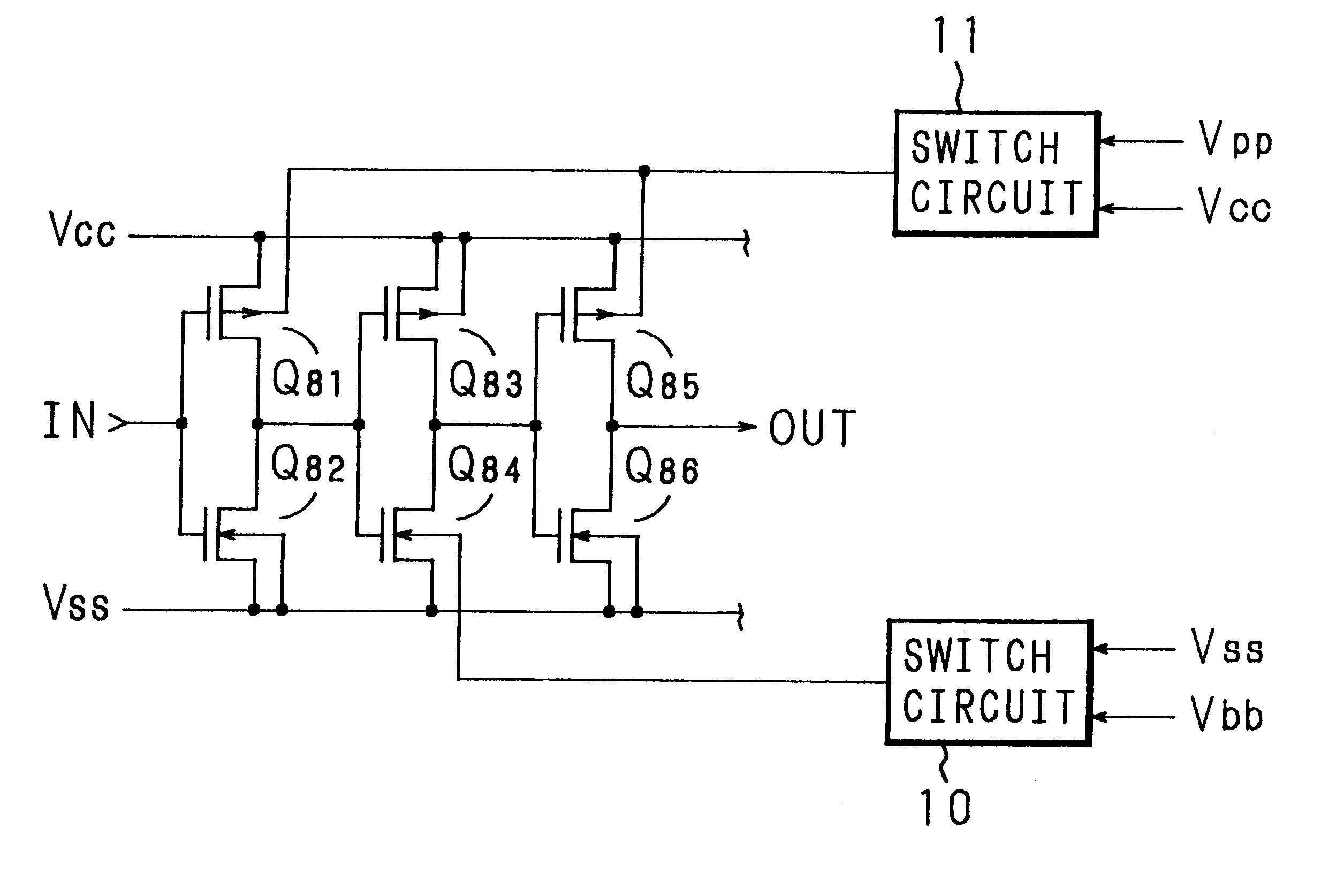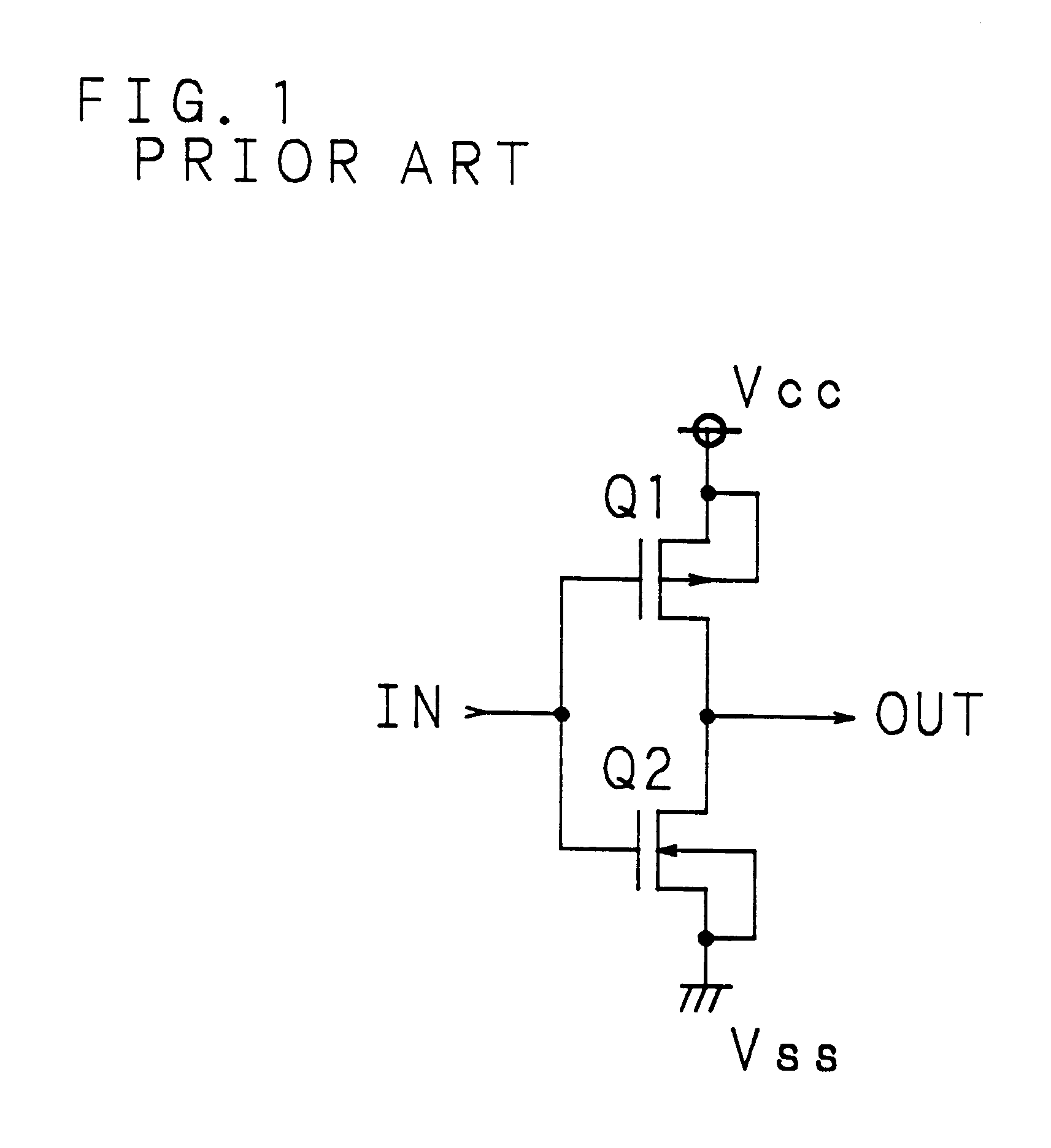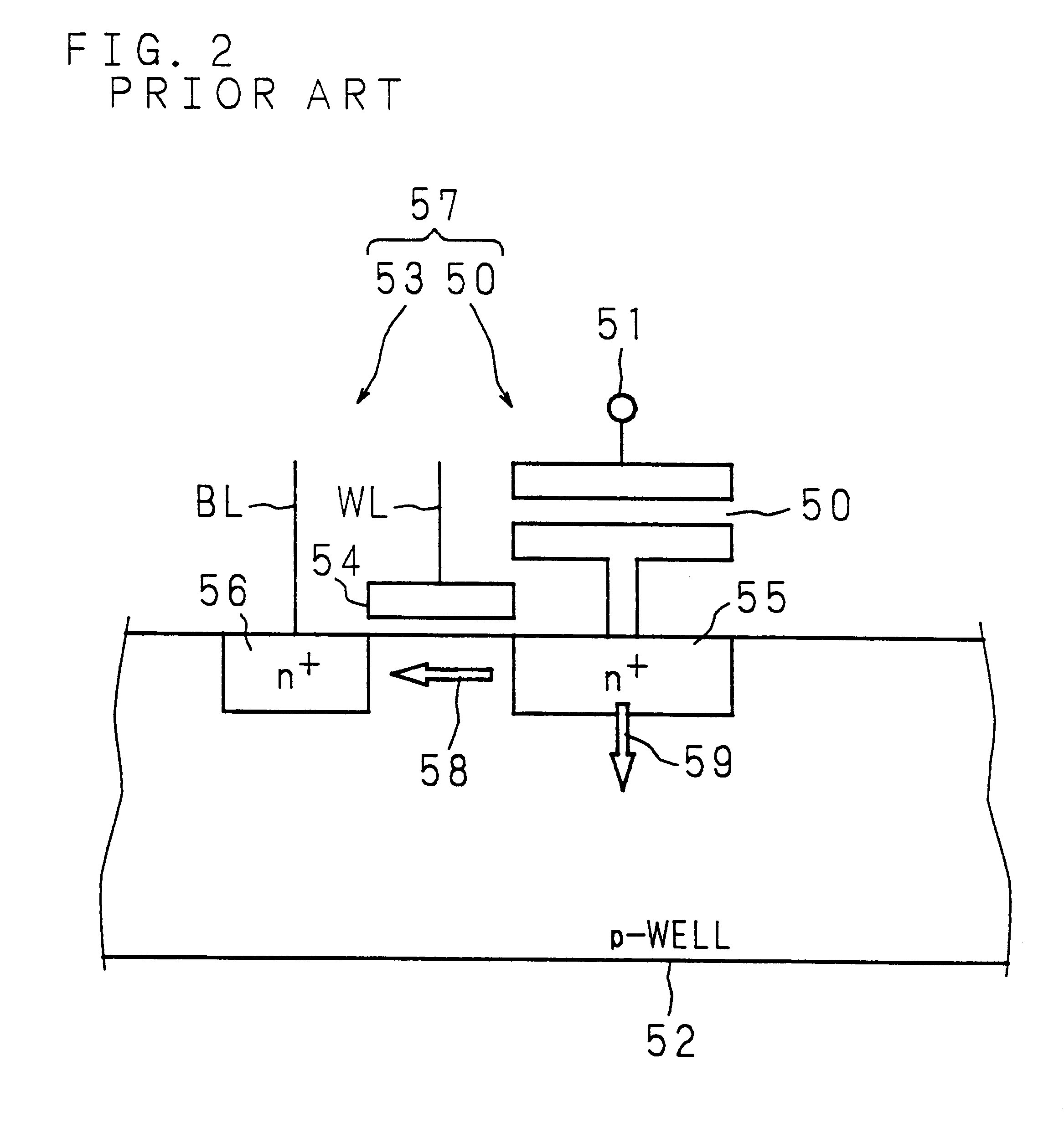Switched backgate bias for FET
a backgate bias and fet technology, applied in the field of semiconductor circuits and mosdrams, can solve the problems of significant delay in switching, subthreshold leakage, and current flowing between source and drain, and achieve the effect of reducing the number of transistors, and improving the efficiency of switching
- Summary
- Abstract
- Description
- Claims
- Application Information
AI Technical Summary
Problems solved by technology
Method used
Image
Examples
first embodiment
FIG. 6 is a circuit diagram of a complementary MOS inverter, showing a logic circuit constituting the semiconductor circuit according to the present invention. Power source potential V.sub.CC is applied to the source of an FET Q1, and ground potential V.sub.SS is applied to the source of an FET Q2. The gates of the FET Q1 and FET Q2 are connected to form an input node IN, and their drains are connected to form an output node OUT. The backgate of the FET Q2 is connected to a switch circuit 10 which switches the ground potential V.sub.SS (=0 V) and potential V.sub.bb (<0 V) lower than the ground potential V.sub.SS, and the backgate of the FET Q1 is connected to a switch circuit 11 which switches the power source potential V.sub.cc and potential V.sub.PP higher than the power source potential V.sub.cc.
Here, the FET Q1 and FET Q2 are designed so that, when the potential V.sub.PP higher than the power source potential V.sub.CC and the potential V.sub.bb lower than the ground potential V....
embodiment 2
FIGS. 10 and 11 are block diagrams showing the configuration of a MOS-DRAM according to a second embodiment of the present invention. An external row address signal is inputted via input terminals ex. A.sub.0 -ex. A.sub.n into an input buffer 26, latched into a latch circuit 27, and then fed into a row decoder 29 through a buffer gate array 39. The row decoder 29 selects an appropriate word line WL.sub.0 -WL.sub.m, and the selected word line WL.sub.0 -WL.sub.m is driven by a word driver 30 to access the intended memory cell 57 connected to that word line in a memory cell array 33.
The contents of the accessed memory cell 57 are outputted to a bit lines BL.sub.0 -BL.sub.k and amplified by sense amplifiers SA.sub.0 -SA.sub.k, while at the same time the same contents are rewritten into the memory cell 57.
On the other hand, an external column address signal, inputted via input terminals, an input buffer, a latch circuit, and a buffer gate array, is fed into a column decoder 31, then sele...
embodiment 3
FIG. 14 is a block diagram showing the configuration of a memory cell according to a third embodiment of the present invention. One electrode of a capacitor 50 is connected to the source of an nMOS-FET 37, and the gate and drain of the nMOS-FET 37 are connected to a word line WL and a bit line BL, respectively. The other electrode of the capacitor 50 is connected to a cell plate 51. Connected to the backgate of the FET 37 is a switch circuit 36 that switches potential V.sub.bb2 supplied from a voltage supply means 48b and potential V.sub.bb1 supplied from a voltage supply means 48a (where V.sub.bb1 <V.sub.bb2).
FIG. 15 is a circuit diagram showing a configurational example of the switch circuit 36, which is substantially same as the circuit diagram of the switch circuit 10 shown in FIG. 7. In FIG. 15, the voltage supply means 48a, potential V.sub.bb2 from the voltage supply means 48b, clock signal generator 49, external RAS (row address strobe) signal (external row select signal) ex....
PUM
 Login to View More
Login to View More Abstract
Description
Claims
Application Information
 Login to View More
Login to View More - R&D
- Intellectual Property
- Life Sciences
- Materials
- Tech Scout
- Unparalleled Data Quality
- Higher Quality Content
- 60% Fewer Hallucinations
Browse by: Latest US Patents, China's latest patents, Technical Efficacy Thesaurus, Application Domain, Technology Topic, Popular Technical Reports.
© 2025 PatSnap. All rights reserved.Legal|Privacy policy|Modern Slavery Act Transparency Statement|Sitemap|About US| Contact US: help@patsnap.com



